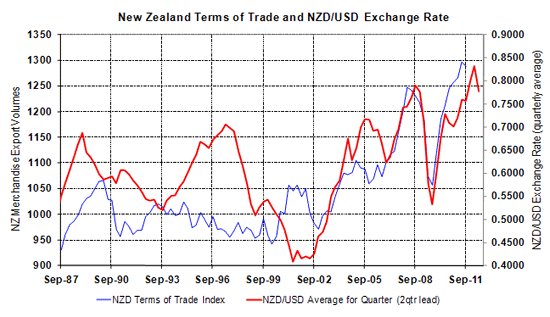
 By Roger J Kerr
By Roger J Kerr
The market forces that drove the Kiwi dollar up from 0.7500 to 0.8400 from December until today appear to have run out of puff over recent weeks i.e. investor “risk-on” mode in January coming from higher global share markets and stronger Chinese economic data.
The sideways movement in the NZD/USD between 0.8300 and 0.8400 over recent weeks tells me that habitual off-shore buyers of Kiwi dollars are not keen to buy more at the 0.8400 price.
On the other side, there has not yet been anything negative enough out of New Zealand, or globally in terms of lower commodity prices from lower Chinese demand to stimulate aggressive NZD selling in the forex markets.
In the short-term, three factors force me to the view that the Kiwi dollar will pull back to 0.8000/0.8100 over coming weeks rather than push on above the 0.8400 resistance:
1. The fact that Greece did not default and there has not been a Lehman-like market meltdown in Europe has caused more short Euro position holders to buy their Euro’s back against the USD, lifting the EUR/USD rate from $1.30 to $1.34 over recent days.
It is very instructive that the NZD/USD rate has not followed the EUR/USD rate upwards.
My expectation is that now that previous market positioning in the EUR/USD has been cleared, new sold Euro positions will now be established, sending the EUR/USD rate lower to $1.30 and below over coming weeks.
2. Chinese PMI manufacturing data due for release this Thursday may be a catalyst for market reassessment of the rate of slowdown in the Chinese economy.
The PMI manufacturing Index stands at 50.5 and consensus market forecasts are for a marginal increase to 50.8. A number below 50.0 would cause immediate AUD and NZD selling in the currency markets.
3. Global investors who purchased NZ Government bonds in during the second half of 2011 (unhedged) are now sitting on major unrealised gains on the bond values, as well as substantial currency gains with the recent NZD appreciation to 0.8400.
Would you cash up the gains (sell bonds and sell NZD’s) if you were in their position? I think so, and it appears they are already selling out of the NZ bonds.
The impact on much higher oil prices around the globe due the tensions in Iran should not be forgotten as a factor in FX markets. The oil markets are reflecting uncertainty and risk to supplies out of the Middle East should Israel send a few missiles in the direction of Iranian nuclear plants.
Shipping disruptions in the Straits of Hormuz is what the oil market worry about. The jump up in oil prices, if sustainable, will limit global growth which in turn should depress commodity prices that the AUD and NZD feed on.
Over and above the aforementioned influences, other pieces of the jigsaw for the Kiwi dollar in the short-term are:-
Fonterra-Global Dairy Trade’s on-line auction next Tuesday night (6 March) may well see further reductions in international Wholemilk Powder prices, as the additional supply from the bumper dairy production season here in New Zealand influence price expectations and demand/supply equations.
NZ business confidence trends are a bit hard to read right now with more positive economic data of late being off-set by business folk being negatively influenced by the media and economic commentators telling them that the European problems are a major headwind for the NZ economy (the evidence to date is to the contrary!) The NBNZ business confidence survey results are released on Wednesday.
The NZ Terms of Trade Index (export prices against import prices) for the December 2011 quarter due this Thursday should record a further pull back from the highs of mid-2011. Our agriculture export prices are reversing down from unsustainably record highs and import prices will be increasing this year with the much higher oil prices. As the chart below depicts, the NZD/USD exchange rate has tracked the Terms of Trade Index closely since 2002. Through the 1990’s high interest rates in New Zealand outweighed the underlying economic fundamentals of export prices. A decrease in the Terms of Trade Index from 1300 to 1200 this year would indicate a NZD/USD rate below 0.8000 rather than above it.

--------------------
* Roger J Kerr runs Asia Pacific Risk Management. He specialises in fixed interest securities and is a commentator on economics and markets. More commentary and useful information on fixed interest investing can be found at rogeradvice.com
No chart with that title exists.
1 Comments
I'd love for Roger to be right, but this other analysis on your site seems to contradict his: http://www.interest.co.nz/currencies/58120/global-risk-appetite-and-wea…
In particular, this comment: "the correlation between the NZD/USD and the US S&P500 is currently 96%."
That shows that the NZ economy is almost completely irrelevant to the NZD value. So what difference will NZ business confidence trends make?

We welcome your comments below. If you are not already registered, please register to comment.
Remember we welcome robust, respectful and insightful debate. We don't welcome abusive or defamatory comments and will de-register those repeatedly making such comments. Our current comment policy is here.